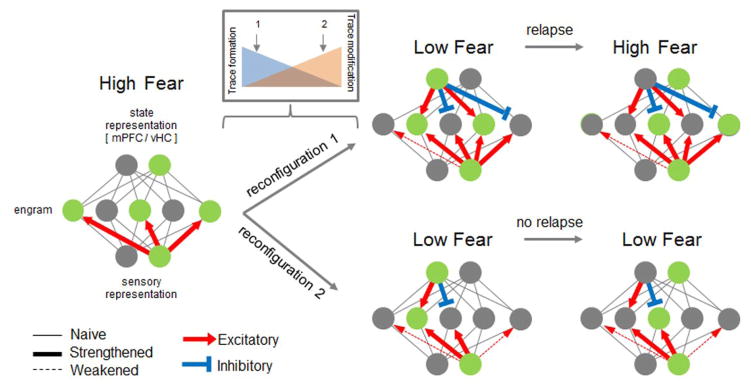Figure 2.
Mixed mechanism model of divergent outcomes in threat memory attenuation. Inconsistent with the dichotomy of new learning and unlearning, some reports indicate that cellular trace modifications such as synaptic depotentiation (dashed arrows) can occur during the transition from high to low fear under many conditions, including extinction [21, 23, 24, 46, 51, 52]. One explanation for differences in susceptibility to relapse might involve the relative balance between new learning and unlearning. A predominance of the new trace formation (reconfiguration 1) could temporarily render a threat response attenuated while preserving an adequate substrate for threat memory reactivation (green nodes). In contrast, a predominance of original trace modification during attenuation (reconfiguration 2) could prevent relapse by leaving an insufficient residual trace of threat conditioning. While the outcomes depicted relate to a system with only two exteroceptive/interoceptive states, it is possible that additional state-specificity of relapse could be determined by the joint configuration of newly-formed and modified traces.

